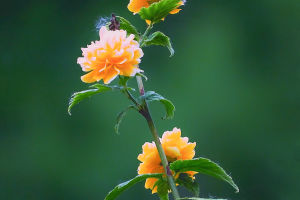In tropical and subtropical regions, palm trees stand as landmarks with their graceful postures and unique characteristics.
Their towering stature, elegant leaves, and rich ecological functions render palm trees as shining pearls in nature.
Let's embark on a journey to explore the captivating world of these remarkable plants together.
To begin with, let's delve into the origin and distribution of palm trees. Palm trees belong to an ancient and diverse group of plants within the botanical realm.
They are dispersed across tropical and subtropical regions worldwide, encompassing Africa, Asia, Australia, and the Americas. In these diverse habitats, palm trees play pivotal ecological roles, enriching local ecosystems with abundant biodiversity.
The appearance of palm trees is among their most striking attributes. Typically characterized by a robust trunk that ascends towards the sky, palm trees boast leaves arranged in gracefully fan-shaped or feathery patterns atop their crowns.
Swaying gently in the breeze, these leaves exude a mesmerizing dance, transforming palm trees into living artworks in the eyes of beholders.
However, palm trees are far more than just aesthetically pleasing landscapes; they harbor rich ecological significance. Primarily, palm trees serve as vital habitats and food sources in tropical regions.
Countless animals, including monkeys, birds, and insects, rely on palm fruits and leaves for sustenance. Moreover, the intricate root systems of palm trees play a crucial role in stabilizing soil and preventing erosion, thereby safeguarding the delicate balance of local ecosystems.
In addition to their ecological functions, palm trees boast numerous practical applications. Their fruits are edible, and the oil extracted from them finds use in the production of food and cosmetics.
Furthermore, palm tree trunks are utilized for constructing houses and crafting furniture, while their leaves are woven into handicrafts such as baskets and hats. Thus, palm trees serve as indispensable resources in human societies.
Nevertheless, despite the myriad advantages and values of palm trees, they face an array of threats and challenges.
The relentless expansion of human activities has inflicted severe damage upon the habitats of palm trees, including rampant deforestation, extensive land reclamation, and the looming specter of climate change.
These perils have precipitated declines in palm tree populations and the degradation of ecosystems, posing grave threats to the delicate balance of local ecology.
Consequently, safeguarding palm trees and the ecosystems they inhabit necessitates concerted action from all quarters. This entails bolstering forest protection measures, fostering sustainable land use practices, and advocating for the implementation of robust environmental conservation policies.
Only through such collective endeavors can we ensure the sustainable utilization of palm trees—a precious natural resource—and bequeath a verdant and thriving planet to future generations.
In summation, palm trees are renowned for their distinctive appearance, rich ecological functions, and practical utility. They not only embellish the natural landscape but also constitute indispensable components of ecosystems.
Protecting palm trees equates to safeguarding our shared abode. Let us unite in our efforts to preserve this verdant sanctuary for posterity.


